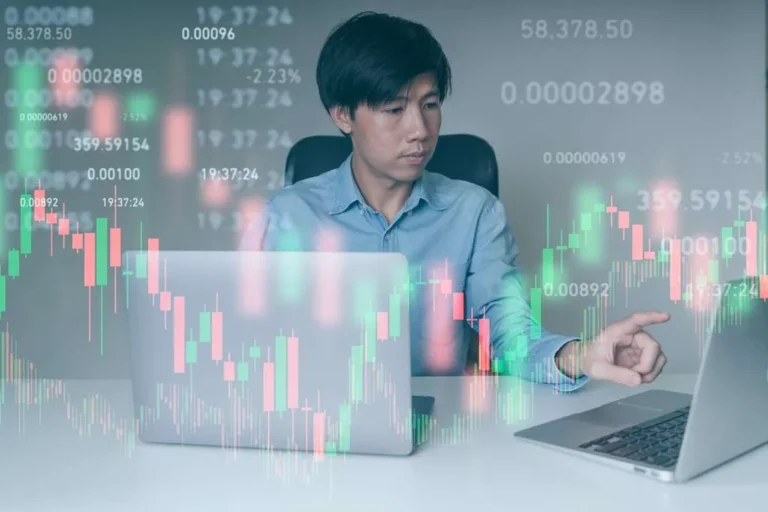Content
Case studies apply this framework demonstrating identifiable behaviors traders can integrate. Ongoing observation strengthens pattern recognition when seeking opportune times to trade evolving market structures. Functional activities of the buy side core involve in-house research analysis of securities and investment followed by direct deployment through portfolio management to create alpha. The sell side entails underwriting new issues, making markets, sales/trading, investment banking advisory work, and investment banking research distribution. Where issuers are connected to investors through a wide what is buy side liquidity range of services in capital markets. Sell side liquidity offers clues about potential pivot points by understanding how prevailing market participants have strategically hedged their risk.
Liquidity commonality in sovereign bond markets
Buy side compensation structures also tend to place more emphasis on performance-based bonuses that directly link pay to the investment outcomes achieved for clients. Sell-side analysts are those who issue the often-heard recommendations of “strong buy,” “outperform,” “neutral,” or “sell.” These recommendations help clients make decisions to buy or sell certain stocks. This is beneficial for the brokerage because every time a client makes a decision to trade stock, the brokerage gets a commission on the transactions. On the compensation front, sell-side analysts often make more, but there is a wide range, and buy-side analysts at successful funds (particularly hedge funds) can do much better. Working conditions arguably tilt toward buy-side analysts; sell-side analysts are https://www.xcritical.com/ frequently on the road and often work longer hours, though buy-side analysis is arguably a higher-pressure job.
The Importance of Market Depth in Liquidity Provision

In order to prevent conflicts of interest between the buy-side and sell-side, the two bodies are separated by a Chinese wall policy. In financial markets, High liquidity means that there are more enough buyers and seller for transaction to occur smoothly and at stable prices. On the other hand, low liquidity implies that executing large trade may cause substantial price fluctuations. Understanding the concepts of liquidity is crucial for understanding concept of “Liquidity Sweep”.
Looking on liquidity crisis from a market microstructure perspective
- My background in market analysis complements my work, allowing me to create content that resonates with audiences.
- Market makers can also benefit from increased trading activity, which can lead to higher profits.
- Tamta is a content writer based in Georgia with five years of experience covering global financial and crypto markets for news outlets, blockchain companies, and crypto businesses.
- Liquidity pools in Forex trading refer to areas within the market that hold substantial order volumes.
- A densely liquid market facilitates smoother Forex trading execution, mitigating the likelihood of disruptive price slippage.
- The Sell-Side mostly consists of banks, advisory firms, or other firms that facilitate the selling of securities on behalf of their clients.
In this article we will teach you the meaning and identification of liquidity in forex market. Many traders are interested in Fair Value Gaps because they can become magnets for price in future price action. After the price reaches a liquidity level and then reverses, what will often come next is Displacement.
Understanding Buy-side and Sell-side Liquidity
When the accumulation and distribution territories take form, the traders can position themselves relative to those concentrations. One stock declined to support under $15 and consolidated sideways for weeks within a $13.50 sell side zone where buying repeatedly absorbed downside tests. Its puncture catalyzed a surprising two-dollar plunge lower as hopeful short-term bulls bailed en masse, with stops triggered in tow below. More often than not, Fibonacci retracement and extension levels identify the buy and sell side areas nearby that can equate to proportionate movements. Zones regularly see convergence with simple moving averages weighted for different periods.

Fair Value Gaps are created within this displacement and are defined as instances in which there are inefficiencies, or imbalances, in the market. These imbalances are visualized on the chart by a three-candle sequence containing one large middle candle whose bordering candles’ upper and lower wicks do not overlap. Market makers exploit these levels to orchestrate liquidity hunts, triggering buy stops before reversing the price direction. Breaking above buy side resistance or below sell side support often sets up an extension that is not sustainable.
The Sell-Side refers to firms that issue, sell, or trade securities, and includes investment banks, advisory firms, and corporations. Sell-Side firms have far more opportunities for aspiring analysts than Buy-Side firms usually have, largely due to the sales nature of their business. Though the concepts might be a bit foreign to traders who are used to a more traditional technical analysis approach, there is a reason that the ICT methodology has become so popular. At their core, markets are built off of price action and trend, and important levels can play a big role in where and why the price reverses. These orders are often stop-loss orders placed by traders who are holding short positions.
Historically Asian (especially Chinese) market participants were driving prices. Hence an increase in trading activity and liquidity was recorded during daytime in Asia. To make the connection to the macro-structure, big changes in liquidity that are news caused, directly manifest in markets microstructure. In consolidation market, there is liquidity on both side of the market and institutions capture the liquidity for their purposes. Liquidity, in more concrete terms, refers to pending orders in the market. There is other form of pending orders which are known as stop-loss orders.
Because their work is consumed by outside companies, sell-side analysts must also form business relationships, attracting and advising new clients. While sell-side analysts create investment research products for sale to other companies, buy-side analysts conduct in-house research intended only for their own firms. This is not to say that sell-side analysts recommend or change their opinion on a stock just to create transactions. However, it is important to realize that these analysts are paid by and ultimately answer to the brokerage, not the clients.
In the video, he highlights all of the concepts discussed above, as well as shows examples of each concept occurring on the chart. The ‘Gap Factor’ value will determine the size of the Fair Value Gap and it is preset to a value of ‘1’. In order for the indicator to highlight smaller Fair Value Gaps, simply utilize a decimal value. In the image below, a Gap Factor of .25 was used to achieve greater granularity and discover smaller Fair Value Gaps that exist on the chart.
The business that the investment bank has offered the wealthy individual is considered the sell-side of the business as it is selling to the client services and financial products. Traders should carefully monitor price actions to confirm potential reversals near these critical levels. In fast and volatile markets, quick position closures by traders lead to price reversals in the opposite direction. Subsequently, they capitalize on this influx of market orders to manipulate the market in the opposite direction, thereby profiting from the actions of retail traders. These levels are deemed to contain sell side liquidity due to the concentration of pending sell orders.
Tamta’s writing is both professional and relatable, ensuring her readers gain valuable insight and knowledge. Based on their recommendations, the asset manager will buy, sell, or hold positions in various securities in anticipation of future profits. On the other side, buy-side firms use sell-side services to make investments. Hedge funds, asset managers, and pension funds are typical examples of funds that buy or sell securities in the hope of earning a profit. The job of a sell-side analyst is to convince institutional accounts to direct their trading through the trading desk of the analyst’s firm—the job is very much about marketing. In order to capture trading revenue, the analyst must be seen by the buy-side as providing valuable services.
DealRoom facilitates numerous M&A transactions annually for organizations across both sectors. Buy-side liquidity thus acts as a strategic tool to exploit market opportunities and enhance trading outcomes. Excessive money can increase prices as demand rises, leading to inflation and economic bubbles. Central banks, like India’s RBI, use various methods to ensure sufficient money availability, particularly during times of crisis. So market after hunting liquidity of one side moves to hunt the liquidity of other side as you can see in the picture below.
In the ICT and other methodologies, liquidity holds immense significance. Monitoring sell side and buy side liquidity levels is crucial for predicting market shifts. Retail traders use ICT to look for imbalances in the market, investigate smart money’s trading behaviour patterns and profit from large price swings.
Understanding and utilizing Buy-side and Sell-side Liquidity is fundamental for traders and investors in financial markets. Liquidity is pivotal for seamless trade execution, benefiting both buyers and sellers. Market orders, on the other hand, involve buying or selling at the current market price.


Comment closed!